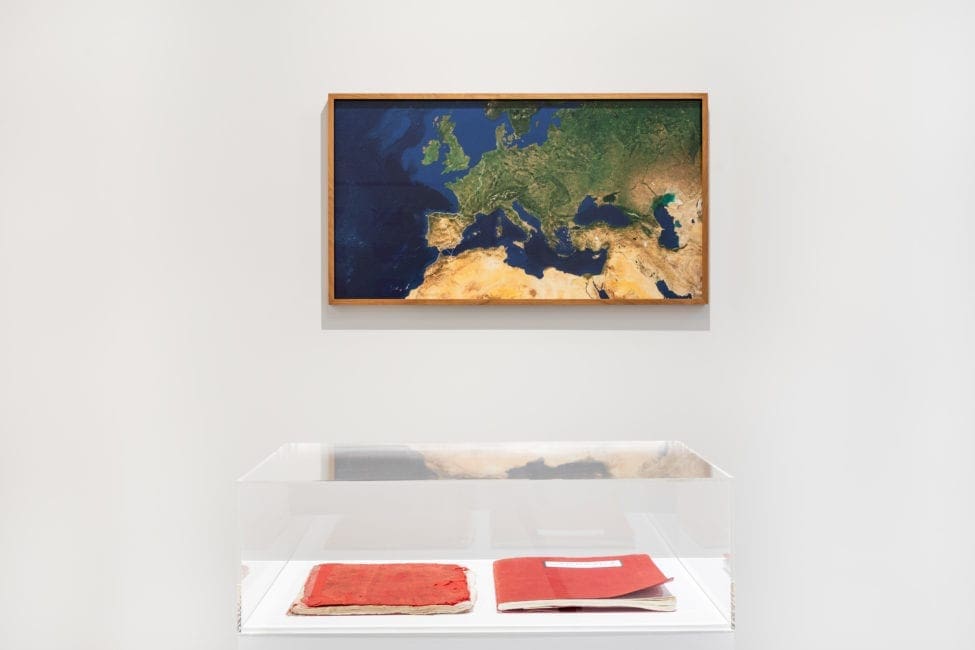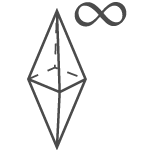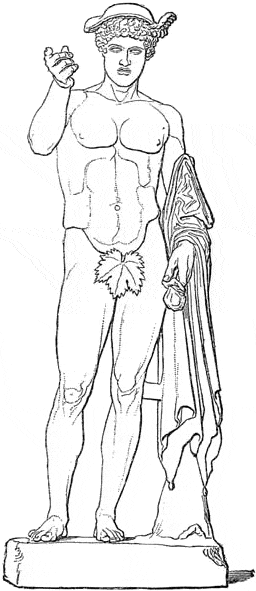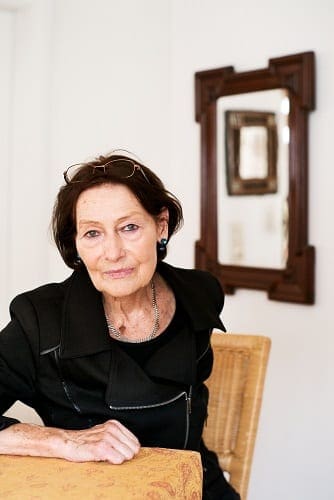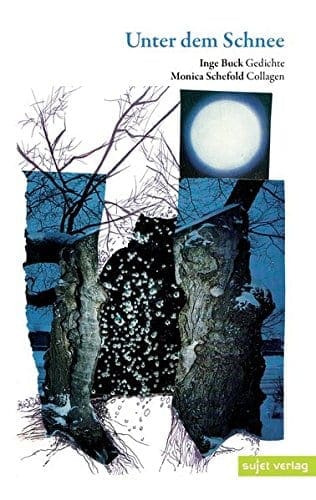Mυθοποίηση – Mythopoesis
GABRIEL
Marianische Antiphonen I
"Under thy protection and shield we flee"
Dear friends!
Entering artistic universes is as fascinating as it is difficult for all of us. What does the artist mean with his works? Does he / she mean anything specific or doesn't he /she rather point in different directions? How can one decipher and understand an artistic language?
It is no different with Gabriel's work and the current exhibition: we first have to get into the swing of things, create approaches and get to know a language: Enthusiasm grows with the relationship we build with someone or something.
Such questions concern us as curators and mediators. That is why we would like to take you with this newsletter to the current exhibition and present some selected works. So, come with us and the artist to the Templar Castle Convento de Cristo in Tomar, Portugal. It was the 5th of August 2019 when the performance Marian Antiphonen I "We flee under your protection and protection" took place here. A pilgrimage station of Gabriel in search of the miraculous. A mythical adventure at the end of the 10s of the 21st century.
-
Of course, the physical exhibition is also still open for you at the Thesaurós. Uhlandstraße. It continues to be open for you until August 8th. We are looking forward to your visit!
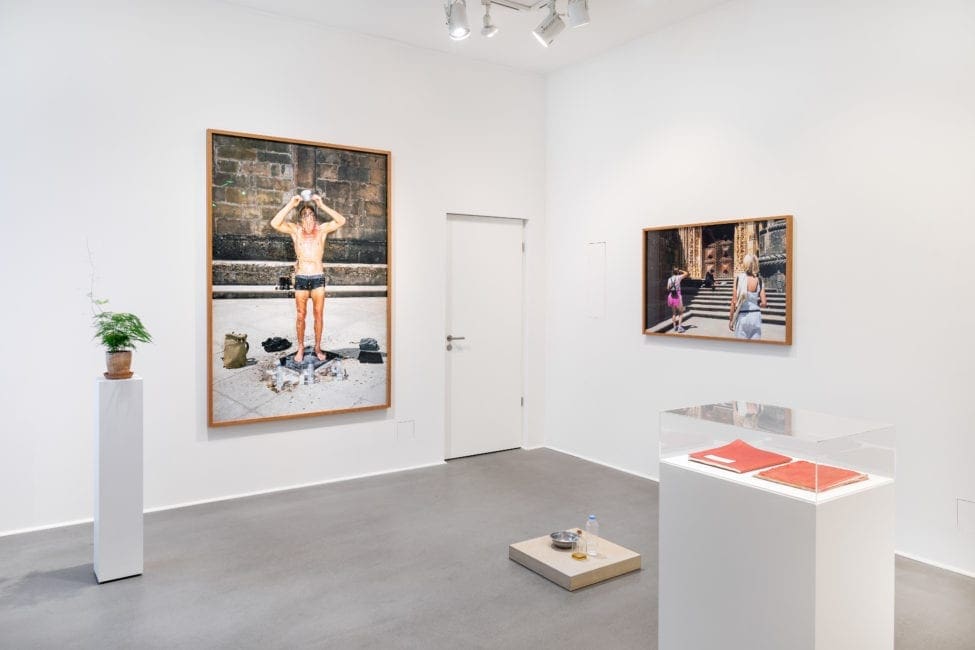
Installation view Marian Antiphones I
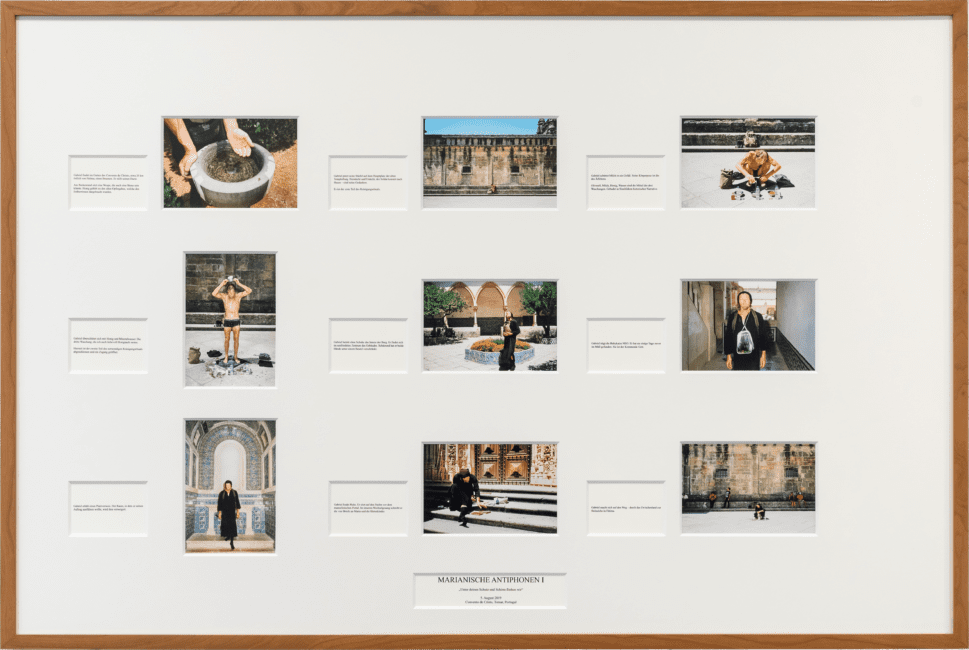
Gabriel and Julian M. H. Schindele (concept), Stefan Hähnel (photography) Marian Antiphons I (Board) 2020, 80 × 120 cm
Marian Antiphons I (Board)
For each of Gabriel’s performances there exists a so-called Tafel [Board]. This board gives us, in the text-image combination of nine photographs and nine text fragments, an overview of the course of events in the performance from August 5, 2019. The most important acts are outlined in simple, sometimes humorous, sometimes cryptic words. Postfactum we reconstruct as viewers – poetizing ourselves – the past, its sequences, empty spaces, physicality, and interstices.
The most important acts were: going to the Convento de Cristo, the refreshment after a long journey at a well, the retreat of the ‘soldier’, who puts down his boots – his most important tool – cleans them and then cleanses himself in three ritual acts, entering the house of God, into which he carries the new-born life, the Coming God.1 (He is in the form of a kitten, to which Gabriel gave the name NEO). Then the expulsion from this house by a representative of the institution and the return to the starting point and place of the cleansing ritual. There Gabriel writes four letters to the shepherd children and to Mary. He becomes a messenger and receives the inner call to carry them to Fátima, the location of the Visions of Mary. The further course of this journey is the subject and content of the Marianische Antiphonen II & III [Marian Antiphons II & III].
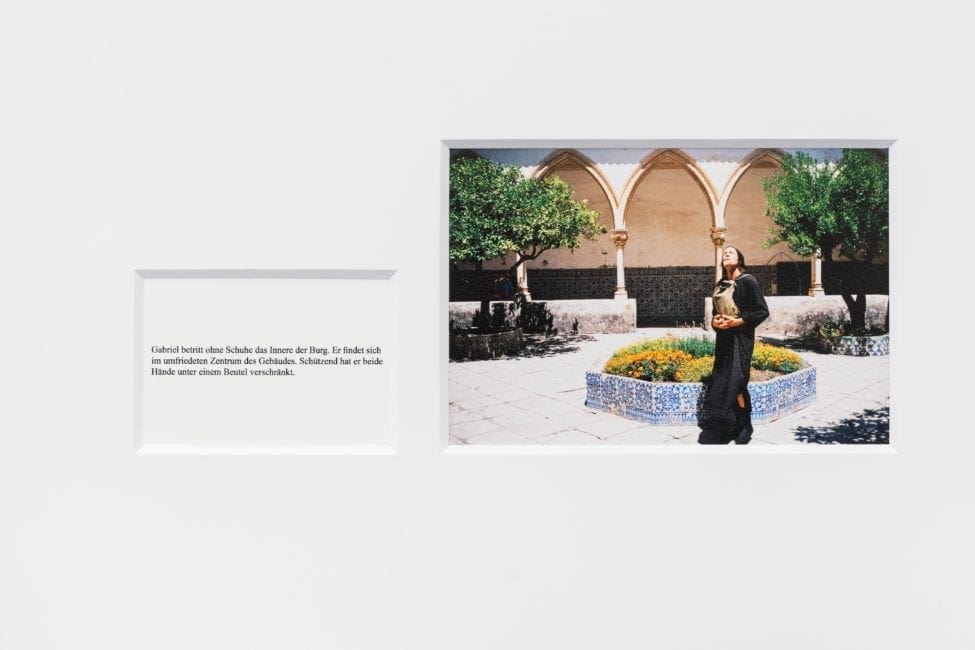
Marian Antiphons I (Board) - detail
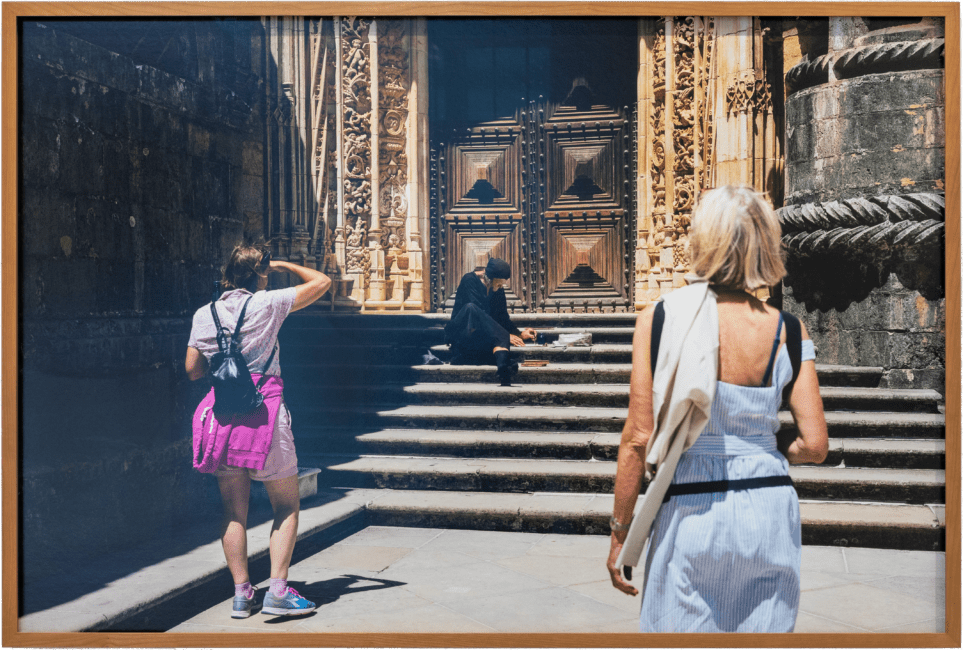
Gabriel photographed by Stefan Hähnel MA I – The Guided Quill 2019, 80 × 120 cm
MA I – The Guided Quill
Before a mighty late Gothic portal, we see Gabriel. Sitting, writing, focused. When you look at the wooden door behind the artist, associations of a heavenly gate are almost inevitably awakened. And indeed, the holiest of holies of the Templar Church lies behind it: The inner church is modelled 1:1 after the Holy Sepulchre, Jesus’ supposed grave, in the old town of Jerusalem. The almost graphic ornament of the doors, the rich Manueline decoration, the heavy materiality of the building, they seem to glow in the heat of the day and in the play of light and shadow.
Our view of the artist is framed by the rear view of two female profiles in the foreground. Are they watching him or the door? What effect did the performance have on random tourists who happened to be there?
He is holding a feather in his hand. Gabriel writes. Different writing utensils around him, ink, paper, a book of Spinoza that is important to him, as well as the red notebook. One might also see NEO’s paw peeking out from behind Gabriel. Regarding this act, the Tafel [Board] says, “Gabriel finds peace. He sits on the steps in front of the Manueline portal. In an inner antiphony he writes the four letters to Maria and to the shepherd children.” These letters make him a messenger. He was ordered to carry them to Fátima, to the place of the Visions of Mary, to the holm oak. What might their content be?

Gabriel photographed by Stefan Hähnel MA I – The Third Ablution or the Baptism of Honey, 2019, 200 × 135 cm
MA I – The Third Ablution or the Baptism of Honey
„I, man, I am dirty, and before I enter the sanctuary, I must cleanse myself. The respect for the symbols and one’s own faith requires it. “
A classic, almost geometric picture structure. In the foreground we see Gabriel, nearly naked, at a moment when he is deluging himself with an amber-coloured liquid. He is standing on the stone slabs of the courtyard of the Convento de Cristo, below him a square folded blanket – the marked primal space. In front of him the instruments of his ablution: olive oil, milk, honey, water. Behind him a wall, which by its architecture almost forms a cross. The pilgrim’s clean shoes stand next to it.
The photograph is called Die Dritte Waschung oder die Honigtaufe [The Third Ablution or the Baptism of Honey] and shows the last of the three symbolic cleaning acts before Gabriel enters the interior of the Convento de Cristo. The elements used for these rituals, which point in their symbolic quality to the most diverse corners of global (cultural) history, are united in their quality of being arch images of purity and the immaculate.
The protagonist himself has closed his eyes; all his attention seems to be directed towards the inside. It is a strange moment; a movement that cannot be fixed seems to lead down through the whole picture. Pathos and rest, activity and standstill, river, and sea. Polarities intertwined.
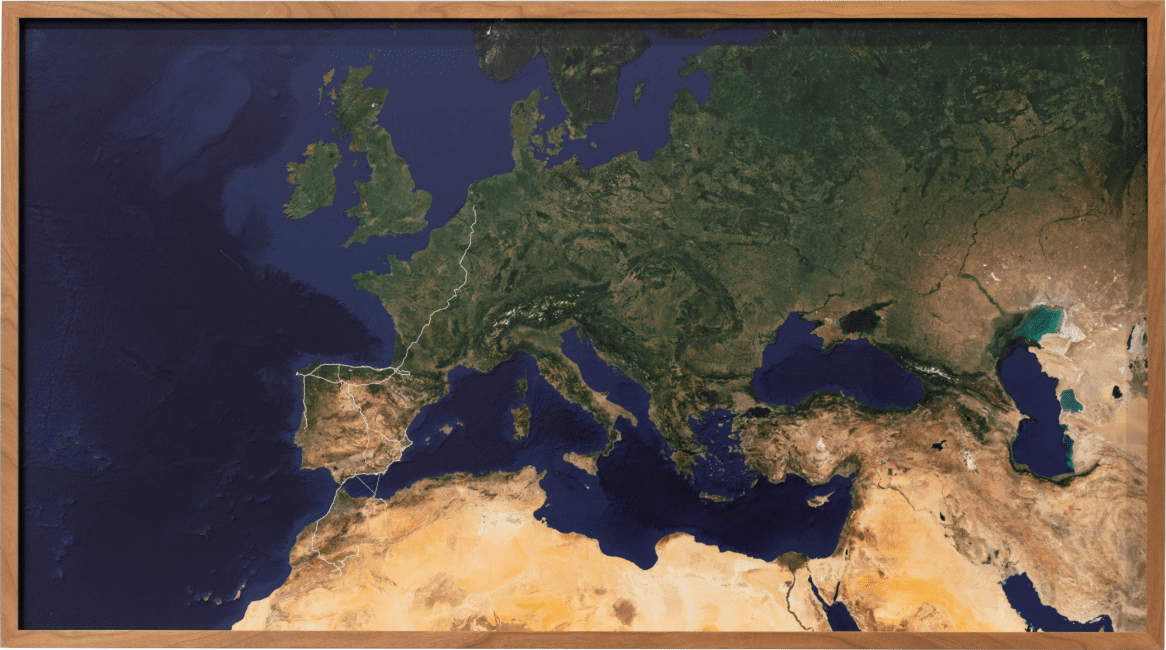
Gabriel in collaboration with Julian M. H. Schindele Map I – 15.9.2015–7.8.2019 2019, 54 × 97 cm
Map I – 15.9.2015–7.8.2019
“We have two jewels, the world and time.” This statement of Gabriel’s is reflected in the art work Karte I – 15.9.2015–7.8.2019. We see a section of our blue planet. This ranges from east to west, from the eastern shore of the Caspian Sea to the Azores in the Atlantic Ocean. From north to south we see the fjords of Norway, the tip of Sinai and the Red Sea as boundaries. “Pilgrimage is always also a testimony and my trace, laid on this map like the fleeting touch of a thread, is just that. Testimony and memory. I see the ancient paths and trails as the blood vessels that have bound and still bind our continent.”
The titular dates mark the beginning of the pilgrimage – the performance WEG – on September 15, 2015. The ‘recording’ ends with the performative narrative Marianische Antiphonen III [Marian Antiphons III] on August 7, 2019.
